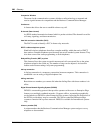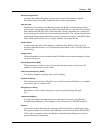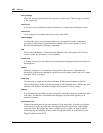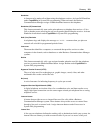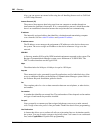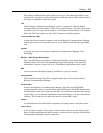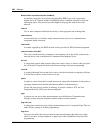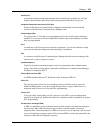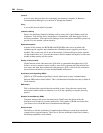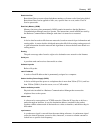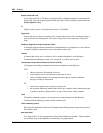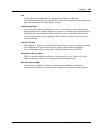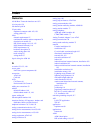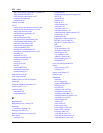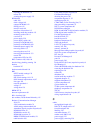
306 Glossary
P0993298 02
protocol
A set of rules and procedures for exchanging data between computers or Business
Communications Managers on a network or through the Internet.
Proxy
A server that acts on behalf of another.
pulse/tone dialing
Pulse is the traditional method of dialing used by rotary-dial or push-button single-line
telephones. Tone dialing allows telephones to communicate with other devices such as
answering machines. You require tone dialing to access the features that PBX systems can
provide or to use another system remotely.
Redundant systems
In terms of this product, the BCM1000 and BCM1000e units can be installed with
redundant power supplies and redundant fans. Redundant power supplies provide two
modules. The system runs off of one of the modules. If that module goes down, then the
second module takes over. You can then remove the first module and replace it with a new
module without turning off the system.
Quality of Service (QoS)
On the Internet and in other networks, QoS refers to guaranteed throughput level. QoS
allows a server to measure, improve and, to some level, guarantee the transmission rates,
error rates, and other data transmission characteristics. QoS is critical for the continuous
and real-time transmission of video and multimedia information.
Q reference point signalling (QSIG)
QSIG is an ETSI standard signalling for multi-vendor peer-to-peer communications
between PBXs and/or central offices. This is an International standard and not available in
North America.
RAID board
This is the board that controls the mirrored disk system. It provides the controls that
ensure that both hard disks are identical, as well as the capability to stop the mirroring
process.
Random Access Memory (RAM)
Computer memory that stores data temporarily. RAM stores the data used by the
microprocessor because it executes instructions. The contents of RAM are erased when
you restart or turn off the Business Communications Manager.
Remote access
The ability to dial into an Business Communications Manager system from outside the
system and use selected features. The Class of Service determines which lines, features,
and dialing capabilities are available.



